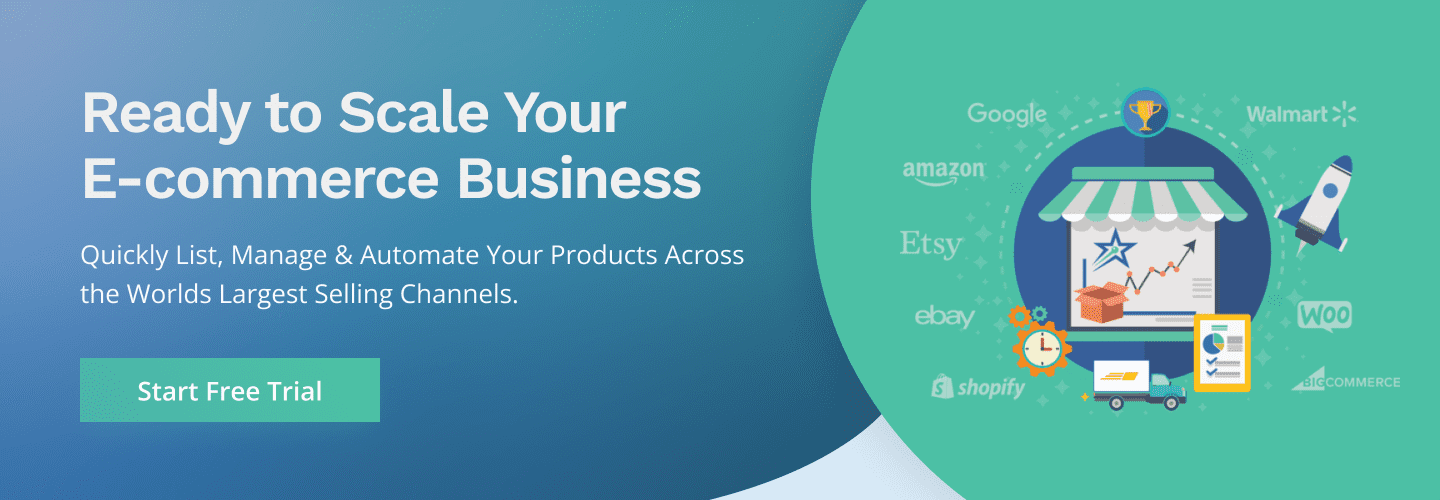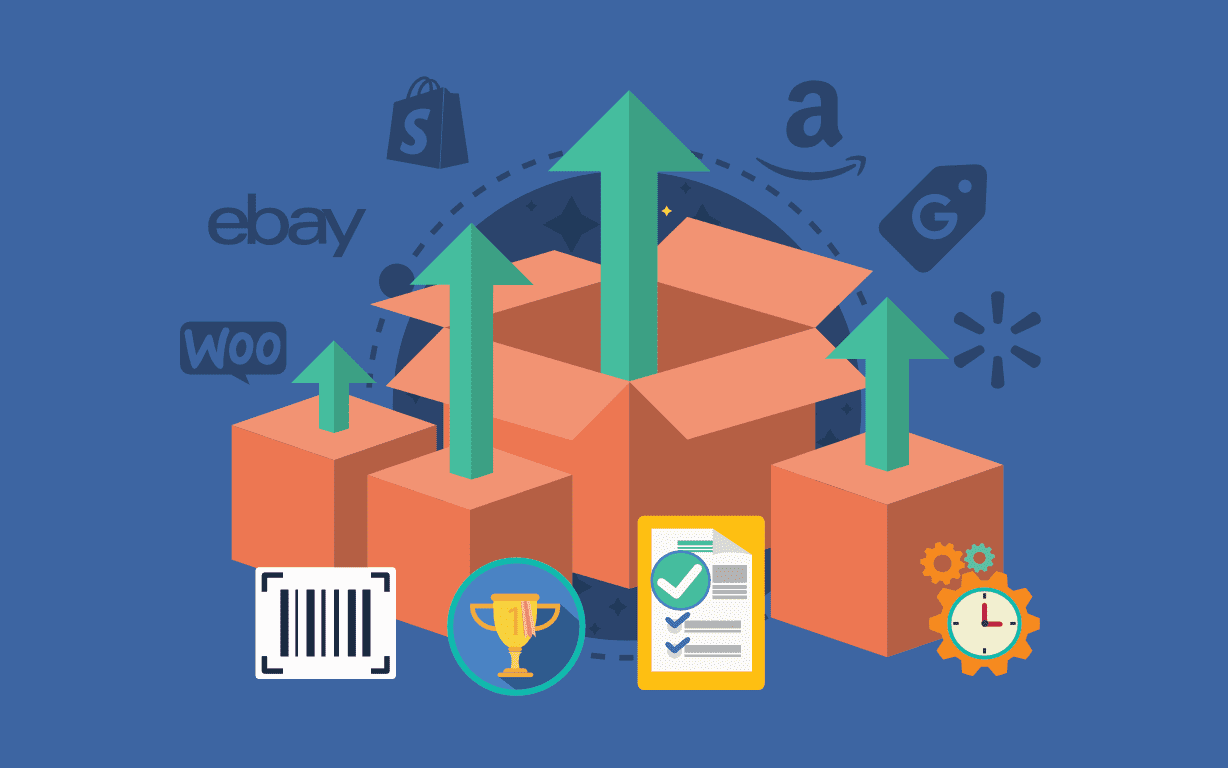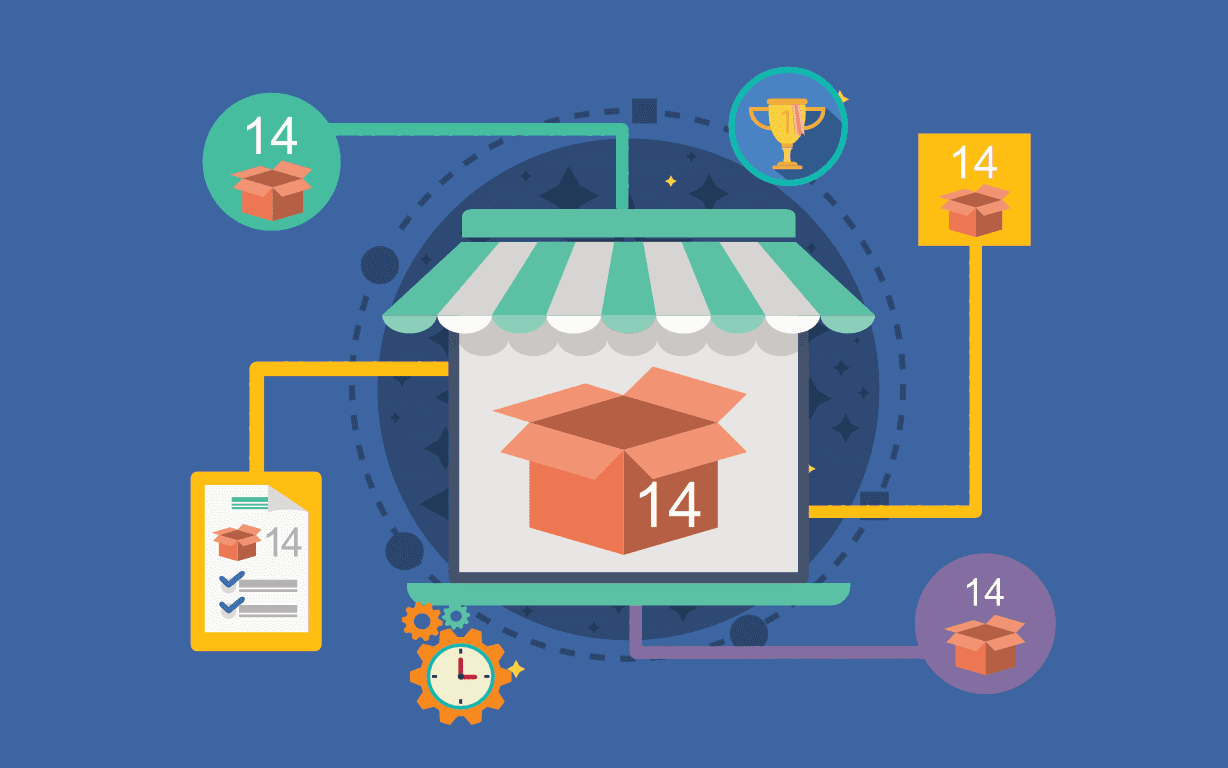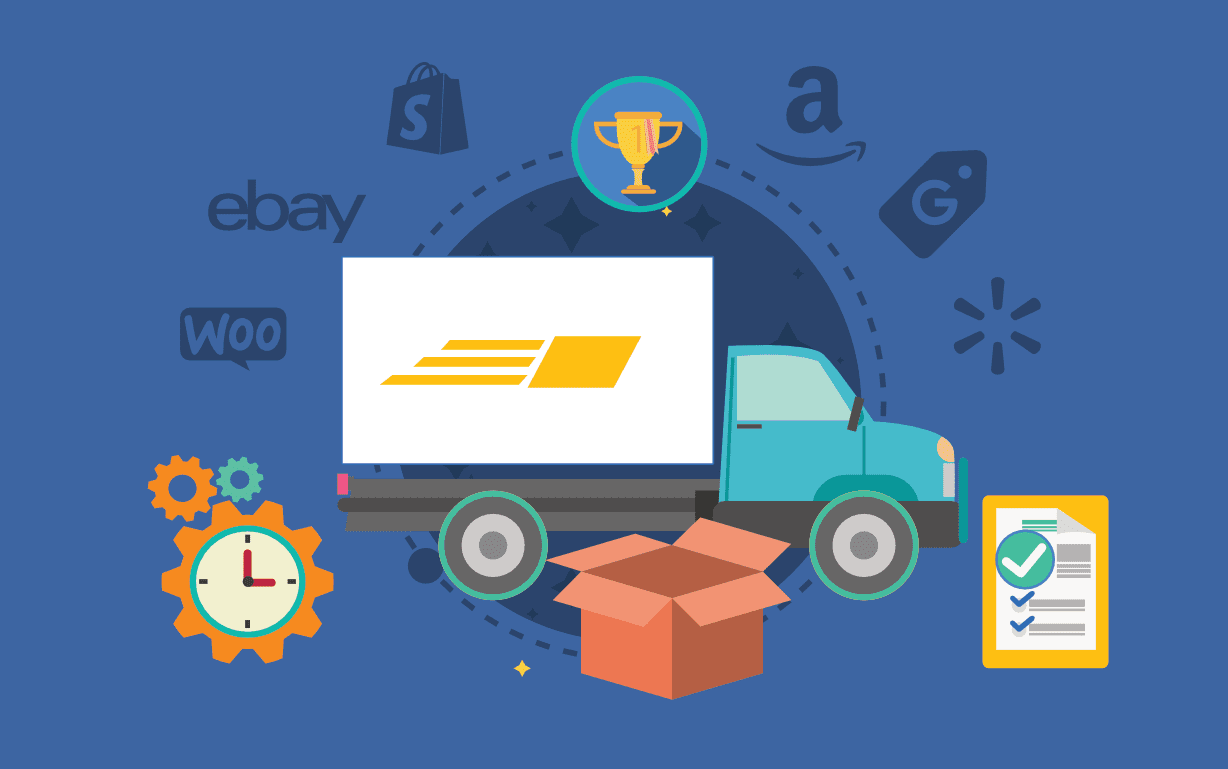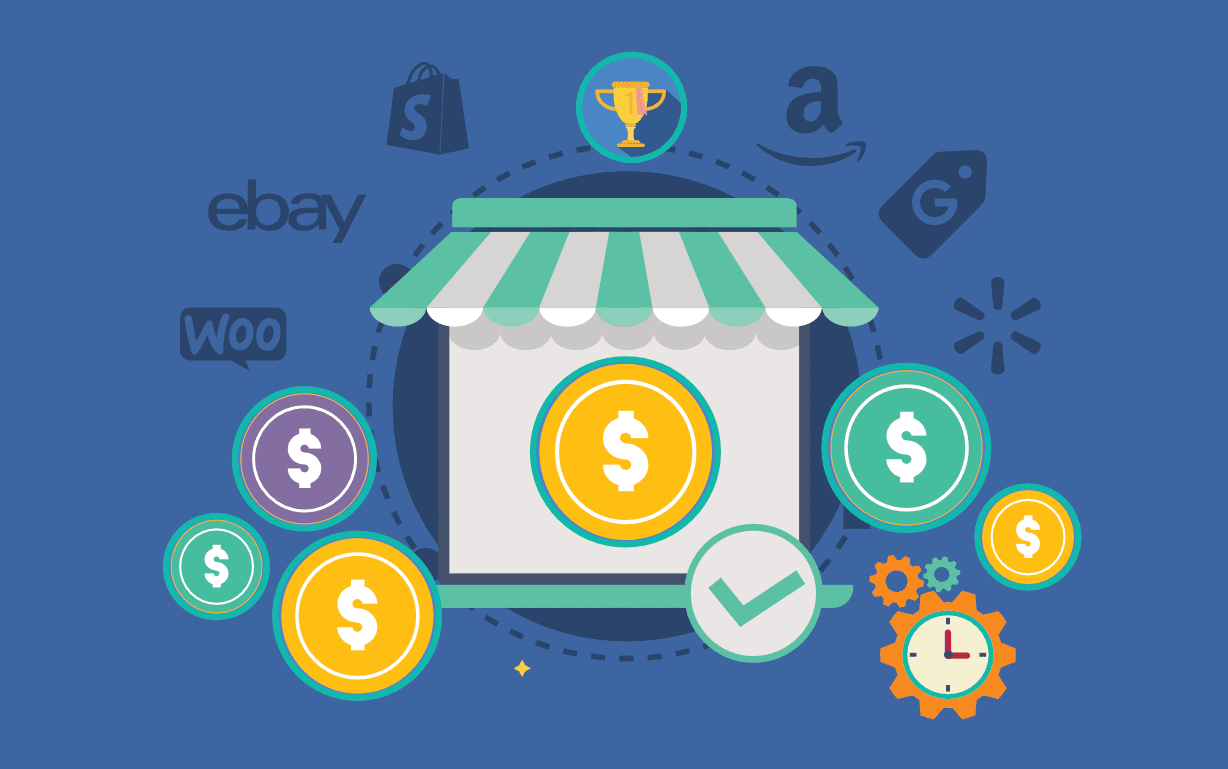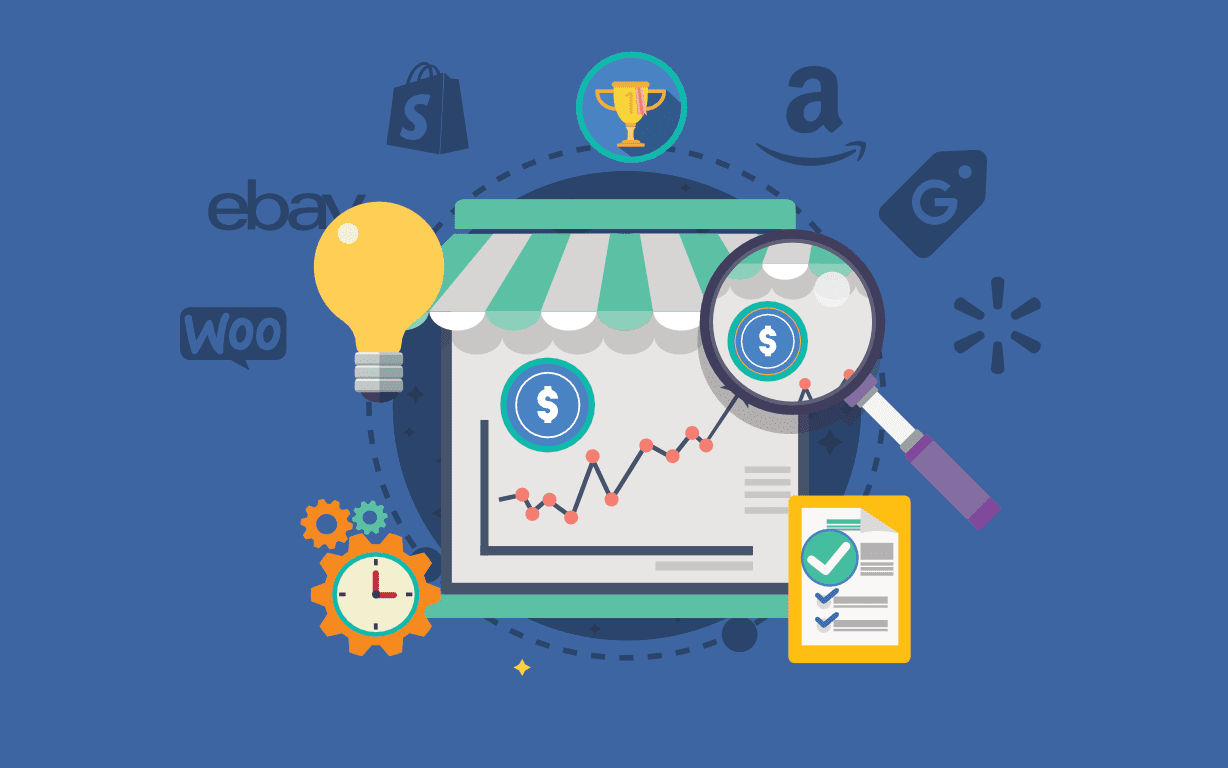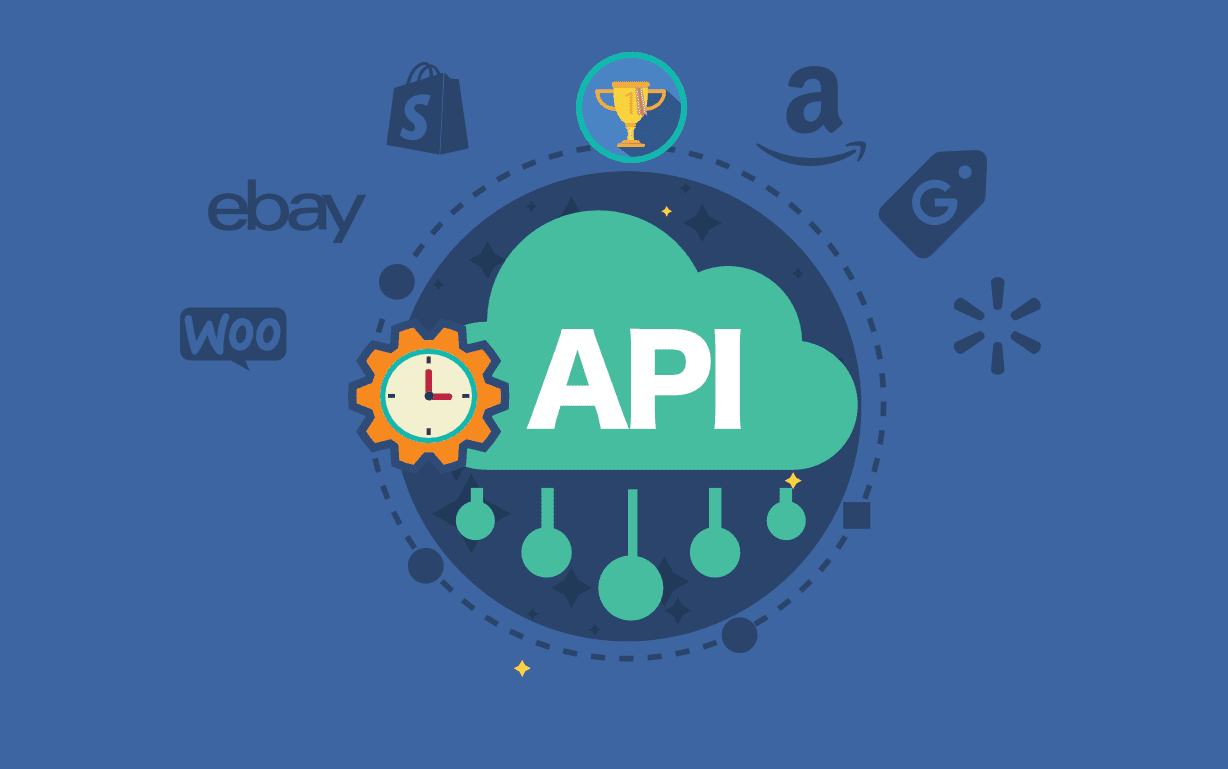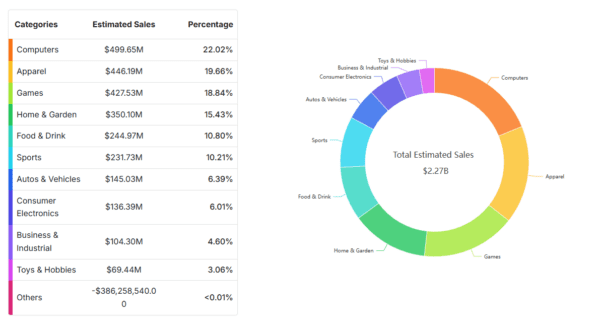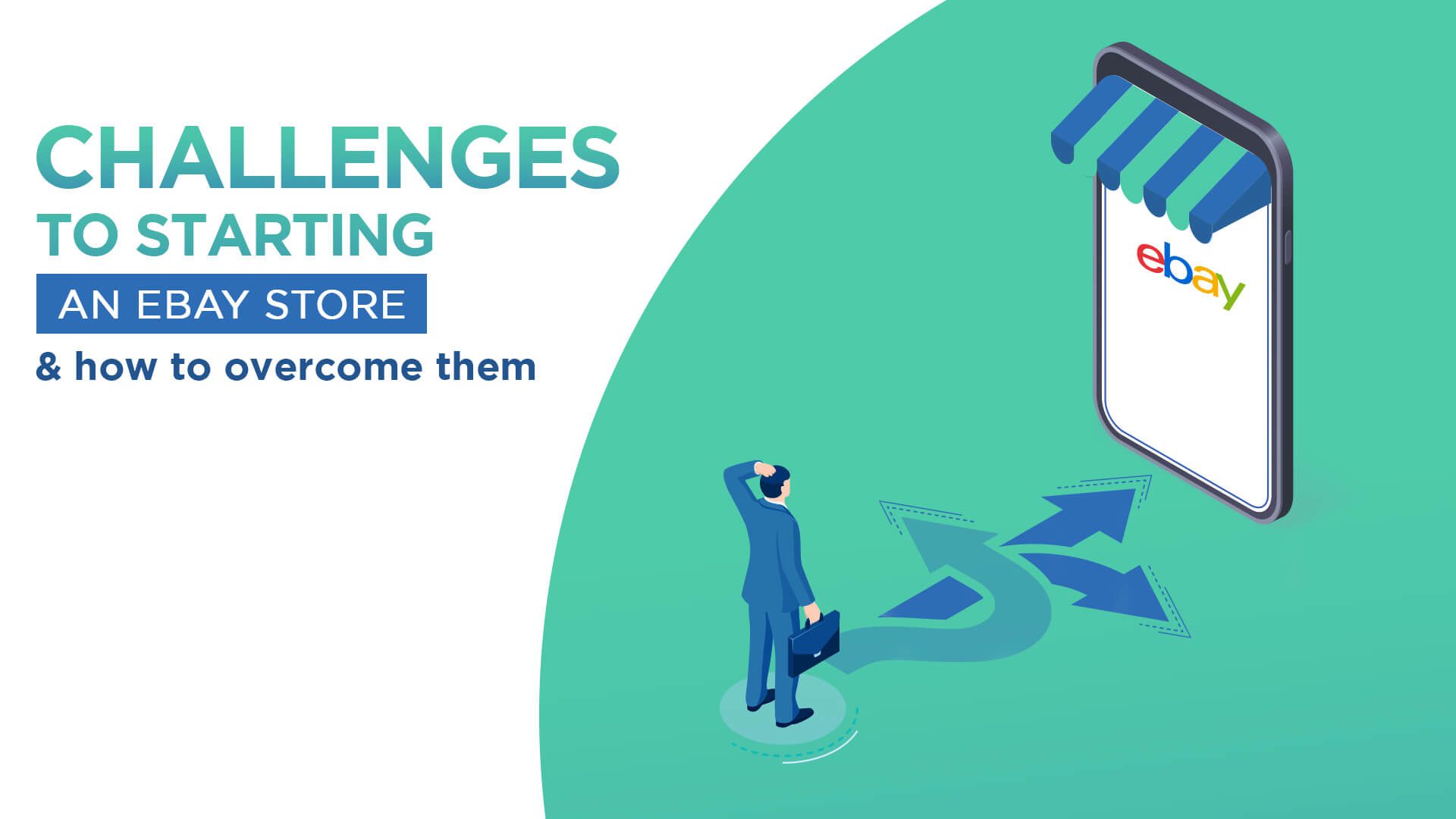
Challenges to Starting an eBay Store & How to Overcome them
What started as an auction listing website back in 1995 has transformed into one of the world’s largest online marketplaces today. With over 1.7 billion listings and more than 187 million users, according to Oberlo, eBay offers a highly lucrative avenue for businesses of all sizes to start and scale their eCommerce setup. But starting an eBay store is no walk in the park. Before you start an eBay store by listing your products, you must understand the platform inside and out to know what you can use as leverage and which challenges you need to be prepared for—so it doesn’t create bottlenecks in your eBay success.
This article will highlight some significant challenges users face while starting an eBay store and leading it to success, along with some proven solutions to overcome them.
7 challenges eBay store owners face (+ how you can solve them)
eBay comes with its own set of advantages like efficient customer acquisition, hassle-free selling, and a pre-existing customer base. But this doesn’t mean it’s easy.
Let’s look at some challenges you might face while starting an eBay store and along your journey with solutions on how to face them with a head-on approach.
eBay places a strong emphasis on customer reviews—and rightly so. People rely on other users’ experiences to make their own buying decisions, which is also reflected in Trustpilot’s research that states a whopping 89% of buyers read reviews before making any purchase.
eBay’s Top Rated Seller program is a part of the platform’s commitment to sellers delivering flawless customer service and products.
But as a brand new store, you don’t have the luxury of getting glowing user reviews from the get-go. More importantly, with so many moving parts in the shipping and delivery process, things may go out of your control—leading to a few bad experiences.
A delayed shipment means a frustrated customer, which ultimately results in a negative review.
Solution: Focus more on product quality and reward reviewers
Working on your packaging and delivery is a great starting point to get more 5-star reviews.
Add a personalized thank you note to each shipment and show your buyers what their purchase means to you. You can also expedite your order fulfillment process to ensure your buyers don’t have to wait too long.
Here are some other best practices that can win you great customer reviews:
- Incentivize customers to drop a review: You can offer cashback or a discount coupon to every customer who leaves a review.
- Follow up to request feedback: Brightlocal says 47% of all internet users write at least one online review each month; asking your customers will remind them to leave feedback.
- Request feedback revisions: If you get a negative review, you have a chance to request feedback revisions.
Brandi Tolley, a customized clothing seller, made her first $200,000 on eBay by offering personal recommendations with the help of feedback she received from her customers. Hers is the perfect example of winning your buyers to get positive reviews and repeat purchases.
eBay’s selling limits restrict sellers—especially the new ones—to only 10 product listings a month. These listings are also limited to a total value of $500 for new sellers like you.
These seller limitations are directly linked with eBay’s focus on delivering a great buying experience. If you haven’t established enough credibility for your brand, you’re not allowed to sell more than a particular amount.
You can get rid of these selling limitations only when you make some sales. Your limit value will increase in proportion to your sales performance as per eBay’s metrics. Besides, if you already have a decent presence on the platform but want to list products in a new category, you must face the same restrictions as a new seller.
Solution: Prove eBay you’re a serious seller
Seller limitations safeguard eBay buyers’ interests and protect them against duping or counterfeit products. As a seller, it’s up to you to build your credibility from the ground up and demonstrate that you’re a trusted brand.
Here are the three keys to increasing your seller limit:
- Keep your service standards high
- Get positive customer feedback
- Ask for regular reviews and act on it
These three factors will collectively inform eBay about your service and position your brand as a reliable one. On top of this, you can also request an increase in your selling limits. Remember to tick off these things before you place such a request:
- Exhaust your current selling limits
Ensure your existing limits are full and in the red zone. Unless you’ve used up your existing limits, you’re not eligible for an increase.

- Maintain your orders and returns properly
Avoid keeping any returned or canceled orders open. Manage and process all such requests promptly before you place your request.

- Aim for a good seller level
eBay evaluates your account to assign a seller-level status depending on your monthly performance. You’ll fall under one of these categories:
- Top-Rated Seller
- Above Standard Seller
- Below Average Seller
The platform prioritizes Above Standard and Top Rated Sellers for a selling limit increase.
Managing your inventory can prove challenging if you’re selling your products on multiple platforms besides eBay.
eBay doesn’t update sales on its platform across all other channels where you’ve listed your product. That means, if you’ve sold a product on eBay, you have to manually update the inventory on other platforms like Amazon, Etsy, or Walmart.
Managing and updating your inventory manually every time you make a sale is as tedious as it gets. Plus, this long-drawn process can also create errors in your inventory management workflow.
Solution: Automate the process with an inventory management tool
An inventory management tool like SellerChamp can make your life easy with an automated and fully synced inventory.
SellerChamp allows you to cross-sell on as many platforms as you want and never worry about running out of stock. It also comes with an auto-import feature to import your product on all channels every day.

Shippit’s research suggests that 49% of buyers, on average, are willing to pay extra for faster delivery. That number is enough to show the importance of shipping for your eCommerce business.
As a new eBay seller, you may want to fulfill all your orders yourself in the initial phase. But the process can get overwhelming when orders start pouring in. This is where eBay’s tedious shipping process can hurt your flow.
Without any level of automation, eBay requires sellers to print labels and arrange consignments while uploading all tracking-related data. Doing all of this manually could mean you’re only swamped with tracking IDs and don’t have the time to work on more critical parts of your business.
eBay’s in-house shipping service is the only option left at your disposal—which can prove pretty heavy on your pocket, especially when you’re a new business.
Solution: Use a fulfillment management tool
SellerChamp is a one-stop solution for all your shipping woes on eBay. Packed with powerful features for multi-channel order fulfillment, SellerChamp can automate your eBay shipping workflow and simplify it.
It comes with integrations to all major fulfillment partners and gives you the ease of managing all your orders from a single, detailed dashboard. Its partnership with Shipstation means you don’t have to worry about packing and picking orders as well.
You just need to wait for a sale and let SellerChamp take care of the rest.

Oberlo’s findings indicate that eBay is home to over 25 million sellers. Imagine the challenge of creating a place for yourself in this incredibly huge list of businesses—and more so when a lot of these sellers offer the same or similar products as you.
This massive number means more choices and greater variety for the buyers. But for new sellers like you, it only means a bigger barrier.
Some sellers resort to undercutting competitors or selling low-quality and cheap substitutes. This is where the quality of your product plays a crucial role in establishing your credibility and winning more sales in the long run.
Solution: Optimize your product listings for eBay’s search engine
If you want to sell more on eBay, you have to stand out from the competition. The best way to do this is by presenting your products in the best light by optimizing your product listings.
Here’s how you can create attractive listings to multiply your traffic:
- Create a catchy and compelling title for your product(s). Make it descriptive and incorporate the right keywords, like this product mentions “professional standalone mixer.”

- Write convincing copies to describe your product. Don’t miss out on any points related to shipping or key attributes, and provide only accurate details, like this example.

- Add high-quality pictures for your product(s). Include some infographic images highlighting your product’s USPs.

- Don’t stuff keywords into your descriptions or headings. These outdated SEO practices can backfire.
Remember: you’ll have a higher chance of succeeding on eBay if buyers have a better notion of what you’re selling. So, optimize your listings with a focus on clarity.
An eBay fashion store owner, Philip Bourdon, presents the perfect case for optimizing listings. He increased his eBay sales by 76% and became a top seller by making simple changes to his listing page.


6. Buyer-centric return policies
eBay favors its buyers when it comes to order returns. This policy places the burden of refunds on the sellers and doesn’t essentially scream seller-friendly.
So, when you get a return request, you’re obliged to process the refund—no matter what. Simply put, if a buyer sends back your product in a used or harmed condition, you still have to pay them back.
In this situation, sellers incur a twofold loss—revenue lost and the time and resources spent packing and shipping the product. This can blow up into a major inconvenience when you don’t have a strategically outlined return policy.
As a seller, you must also consider the possibility of failed deliveries, with every 1 in 20 online purchases ending up in failed deliveries. On average, every failed delivery attempt costs $25—a big number if you’re processing tens of orders regularly.
Solution: Create a detailed return policy covering all bases
As an eCommerce seller, you’re bound to take some risks. Return orders constitute some part of the risk of losing out on time, money, and resources. This loss is even more considerable when the product comes back damaged.
To minimize your risk from return orders, you have to create a properly thought-out returns policy detailing every condition regarding return requests. This return policy will also eliminate any room for confusion and help you maintain healthy customer relationships in case of a genuinely faulty delivery.
Here are some components that you should define in your returns policy:
- Who is accountable for the return shipping?
- How long can the buyer restore the product before imposing a restocking fee?
- Specify the condition in which the buyer must return the product.
After thorough research and brainstorming, chalking out your return policy is the easiest way to tackle all return-related concerns.
eBay has a three-tier division of all the product categories for its marketplace. The platform charges sellers a tier-based price for product listings.
This tier-wise breakdown gets confusing and challenging when you list a product for two or more categories. You have to first pay an insertion fee for posting in a different category—despite being a free listing.
So, while placing your product in multiple categories is an excellent way of getting more eyes and clicks on your listing, it’s also a lot more expensive.
Solution: Choose only one category per product
Unless necessary, avoid putting a single product in multiple categories. You can easily improve your listing traffic with a solid SEO strategy. However, picking categories in different tiers is an unnecessary cost that you can easily save.
Conclusion
eBay is a low-risk and high-potential marketplace for small and starter businesses. With the platform’s robust infrastructure and massive customer base, you can scale your business by leaps and bounds.
The only catch is—starting an eBay store is not always an easy ride. You might face many challenges, and knowing these roadblocks is a great way to prepare yourself beforehand. Follow the solutions listed in this blog to guide your efforts and start an eBay store in no time!
You can rely on tools like SellerChamp to do all the heavy lifting for you. From inventory sync and management to order fulfillment, SellerChamp is a feature-packed platform to make your eCommerce workflows as seamless as ever!


